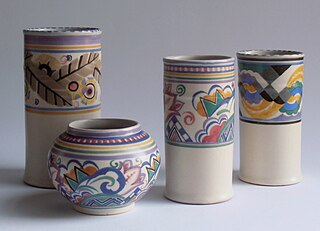
Dorset is a ceremonial county in South West England. It is bordered by Somerset to the north-west, Wiltshire to the north and the north-east, Hampshire to the east, the Isle of Wight across the Solent to the south-east, the English Channel to the south, and Devon to the west. The largest settlement is Bournemouth, and the county town is Dorchester.

Wimborne Minster is a market town in Dorset in South West England, and the name of the Church of England church in that town. It lies at the confluence of the River Stour and the River Allen, 5 miles (8 km) north of Poole, on the Dorset Heaths, and is part of the South East Dorset conurbation. According to Office for National Statistics data the population of the Wimborne Minster built-up area as of 2014 was 15,552.

Sir Joseph Wilson Swan FRS was an English physicist, chemist, and inventor. He is known as an independent early developer of a successful incandescent light bulb, and is the person responsible for developing and supplying the first incandescent lights used to illuminate homes and public buildings, including the Savoy Theatre, London, in 1881.

Bournemouth is a coastal resort town in the Bournemouth, Christchurch and Poole unitary authority area in the ceremonial county of Dorset, on the south coast of England. The built-up area had a population of 196,455 at the 2021 census, making it the largest town in Dorset. The town is part of the South East Dorset conurbation.

Poole is a coastal town and seaport on the south coast of England in the Bournemouth, Christchurch and Poole unitary authority area in Dorset, England. The town is 21 miles (34 km) east of Dorchester and adjoins Bournemouth to the east. Since 1 April 2019, the local authority is Bournemouth, Christchurch and Poole Council. The town had an estimated population of 151,500 making it the second-largest town in the ceremonial county of Dorset. Together with Bournemouth and Christchurch, the conurbation has a total population of nearly 400,000.

Swanage is a coastal town and civil parish in the south east of Dorset, England. It is at the eastern end of the Isle of Purbeck and one of its two towns, approximately 6+1⁄4 miles (10 km) south of Poole and 25 miles (40 km) east of Dorchester. In the 2011 census the civil parish had a population of 9,601. Nearby are Ballard Down and Old Harry Rocks, with Studland Bay and Poole Harbour to the north. Within the parish are Durlston Bay and Durlston Country Park to the south of the town. The parish also includes the areas of Herston, just to the west of the town, and Durlston, just to the south.

Sir Kenneth Henry Grange is a British industrial designer, renowned for a wide range of designs for familiar, everyday objects.

Nicholas David Gordon Knight is a British fashion photographer and founder and director of SHOWstudio.com. He is an honorary professor at University of the Arts London and was awarded an honorary Ph.D. by the same university. He has produced books of his work including retrospectives Nicknight (1994) and Nick Knight (2009). In 2016, Knight's 1992 campaign photograph for fashion brand Jil Sander was sold by Phillips auction house at the record-breaking price of HKD 2,360,000.

Poole Pottery is a British pottery brand owned by Denby Pottery Company, with the products made in Stoke on Trent, Staffordshire.

Bocci is a Canadian design and manufacturing company based in Vancouver and Berlin, founded in 2005 by Randy Bishop and Omer Arbel. Bocci specializes in sculptural lighting and large light installations.
Edward Craven Walker was a British inventor, who invented the psychedelic Astro lamp, also known as the lava lamp.

Tom Dixon is a self-educated British designer. He is the creative director of the eponymous brand "Tom Dixon", specialising in lighting, furniture, and household accessories. Dixon's collections are shown at events such as the Milan Furniture Fair and the London Design Festival. Dixon also spent 10 years as head of design at Habitat. Through Design Research Studio, he has designed restaurants, clubs and hotels.

A lava lamp is a decorative lamp, invented in 1963 by British entrepreneur Edward Craven Walker, the founder of the lighting company Mathmos.

PHUNK is a Singapore-based contemporary art and design collective founded by Alvin Tan, Melvin Chee, Jackson Tan, and William Chan in 1994. They have exhibited and collaborated with artists, designers and fashion brands around the world, producing work across a diverse range of mediums.

Ingo Maurer was a German industrial designer who specialised in the design of lamps and light installations. He was nicknamed "poet of light".
Cressida Granger is a British entrepreneur. She is the owner and managing director of Mathmos, the lighting company founded by Edward Craven Walker, inventor of the lava lamp.

The Old Higher Lighthouse is a disused 19th century lighthouse on the Isle of Portland, Dorset, southern England. It is located at Branscombe Hill on the west side of Portland, overlooking Portland Bill. The lighthouse is Grade II Listed.

Arik Levy was born in Tel Aviv. An artist and industrial designer, he attended the Art Center Europe in Switzerland where he graduated with distinction in 1991. Levy employs a multi-disciplinary approach in both the art and industrial design fields. His works have been included in multiple museum collections. Levy lives and works in Paris.
Carlotta de Bevilacqua is an Italian architect, designer and entrepreneur. She is currently President and CEO of Artemide and President of Danese Milano.

Konstantin Grcic, born 1965, is a German industrial designer known for his design of furniture and household products, some of which have been featured in design shows and museums. His design language is characterized by the use of geometric shapes and unexpected angles.


















